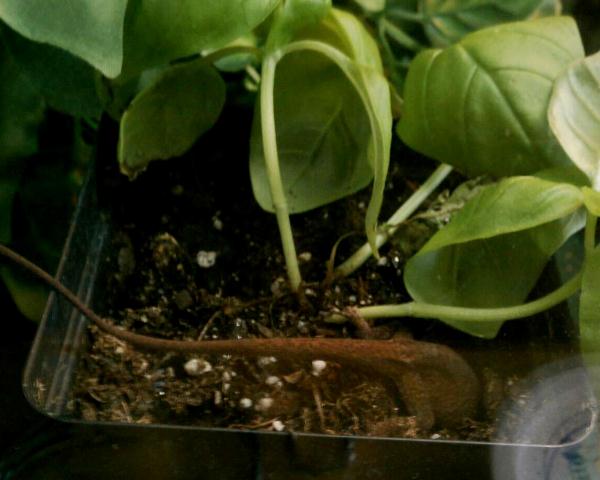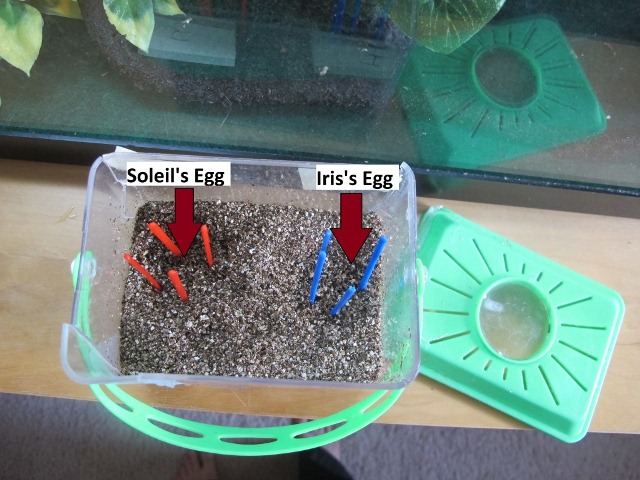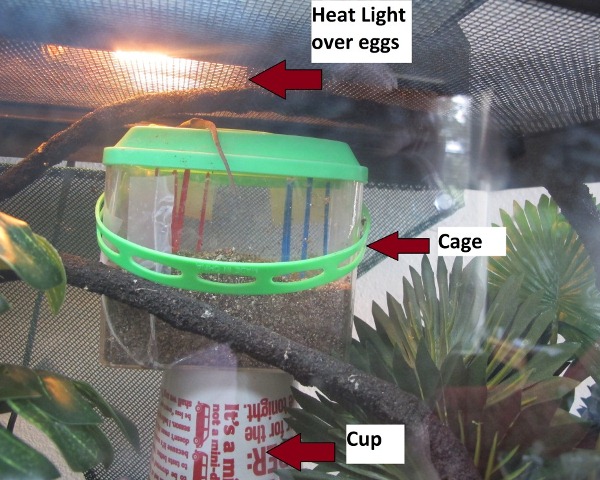

| Visitors Now: | |
| Total Visits: | |
| Total Stories: |
Hatching for Hobbyists
Some previous posts on Anole Annals have stimulated excellent discussions regarding the care of Anolis eggs in a laboratory setting. To this, I’d like to share a few tips as a hobbyist who has successfully incubated A. carolinensis eggs outside the laboratory for many years.
A month before breeding season, I place a small organic (fertilizer-free) potted basil plant in each cage. This plant is watered weekly to keep the soil moist enough to prevent egg dessication without making the soil too heavy for easy digging. Every few days, I comb through the soil with my fingers to check for eggs.
Any eggs that are found in the plant soil are immediately transferred to a small acrylic cage where they are shallowly buried in fertilizer-free water-moistened vermiculite purchased from a home and garden store.
The incubation cage with a vented lid is then elevated close to a 15 watt incandescent bulb (for my set-up, a tall cup does the job nicely) inside one of my adult anoles’ cages. Also nearby, but not directly overhead, is a 15 to 20 watt UVB fluorescent bulb. Every 3 days, a few drops of luke-warm tap water are sprinkled directly on top of the eggs. In this environment, A. carolinensis eggs hatch in about 43 days (range = 36 to 63 days).
Immediately upon hatching, the baby anoles are removed from the incubation cage to be singly housed or housed with other hatchlings. Baby anoles should not be housed with adults as their older counterparts sometimes eat them for dinner! Four days after hatching (range = 3 to 7 days), baby anoles begin eating gut-loaded pinhead crickets and flightless fruit flies.
Please note that collecting anole eggs from the wild may be illegal in your state or country and any discussion related to illegal collection of animals from the wild is banned from Anole Annals (for more info, click here).2012-07-29 09:00:32
Source: http://www.anoleannals.org/2012/07/29/hatching-for-hobbyists/
Source:






